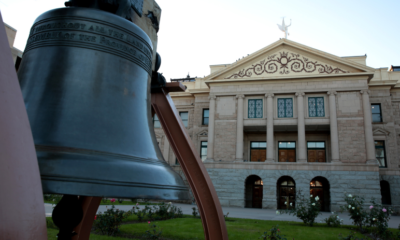arizona
Rising Heat Deaths in Mobile Homes Reveal Stark Energy Inequity

Nearly a quarter of the indoor heat deaths in Maricopa County last year occurred in mobile homes, which become unbearably hot under the desert sun.
PHOENIX — Mexican farm worker Avelino Vazquez Navarro died last month in Washington state from heat exposure in his air condition-less motor home, as temperatures soared into triple digits.
The 61-year-old spent the past twelve years working in Pasco, Washington, sending money to his family back in Nayarit, Mexico, and traveling home every Christmas. Now, his family is raising funds to repatriate his remains.
Franklin County Coroner Curtis McGary stated, “If this motor home would have had AC and it was running, then it most likely would have helped.” McGary confirmed that Vazquez Navarro’s death was heat-related, with alcohol intoxication as a contributing cause.
Most heat-related deaths involve homeless people, but those who die inside are often older, living alone, and have limited financial resources. A significant number of these victims are Black, Indigenous, or Latino.
“Air conditioning is not a luxury; it’s a necessity,” said Mark Wolfe, executive director of the National Energy Assistance Directors’ Association. “It’s a public health issue and an affordability issue.”
Those living in mobile homes, aging trailers, and RVs are especially at risk. Nearly a quarter of indoor heat deaths in Maricopa County last year were in such dwellings. “Mobile homes can really heat up because they don’t always have the best insulation and are often made of metal,” said Dana Kennedy, AARP director in Arizona.
This risk is particularly high in Phoenix, where temperatures are set to hit 113 degrees Fahrenheit (45 Celsius) this weekend. “People are exposed to the elements more than in other housing,” noted Patricia Solís, executive director of the Knowledge Exchange for Resilience at Arizona State University.
Some mobile home parks restrict residents from making modifications like adding window units or shade awnings to cool their homes. This summer, a new Arizona law required parks to allow such installations.
Out of Maricopa County’s 645 heat-related deaths last year, 156 occurred indoors in environments without sufficient cooling. Typically, a unit was either non-functional, lacked electricity, or had been turned off.
One such case involved Shirley Marie Kouplen, who perished inside her Phoenix mobile home during a heatwave. Emergency responders recorded her body temperature at 107.1 F (41.7 C). Kouplen’s mobile home was in poor condition, indicating financial struggle. The cause behind her electrical disconnection remains unclear.
“Losing your air conditioning is now a life-threatening event,” said Andrew Dessler, a climate scientist at Texas A&M University.
Since 2022, Arizona’s regulated utilities are barred from cutting off power during the summer after a 72-year-old woman died when her electricity was disconnected over a $51 debt. However, cut-offs can resume after summer if debts aren’t settled.
About 20% of very-low income families have no air conditioning, particularly in places like Washington state, where such systems were rare before climate change intensified heat waves. Hundreds died in the Pacific Northwest during a 2021 heat wave, prompting Portland, Oregon, to provide cooling units to vulnerable residents.
In 1995, a heatwave in Chicago killed 739 people, leading to a 2022 cooling ordinance mandating air-conditioned common areas in certain buildings. Meanwhile, the Phoenix-based nonprofit Wildfire raised over $2 million to provide air conditioning to 150 households across Arizona over three years.
Legal protections in cities like Phoenix, Palm Springs, and Las Vegas require landlords to provide air conditioning in rental units. Dallas also has a similar law.
However, renters usually pay their own electricity bills, which makes them wary of using air conditioning. The average cost to keep cool from June to September is expected to rise 7.9% this year, from $661 in 2023 to $719 this summer.
Wolfe highlighted that the federal Low Income Home Energy Assistance Program is underfunded, with 80% of its budget directed towards heating during winter.
Investigations into heat-related deaths in Maricopa County have spiked, with 14 confirmed and 234 under investigation this year, a significant increase from last year.
Kouplen’s neighborhood had little contact with her, but her pets have since been adopted. She is buried alongside her husband at the National Memorial Cemetery of Arizona. Their marker reads, “Never Forgotten.”
Investigations into possible heat-related deaths continue to rise, revealing the increasing toll of extreme heat.
Heat Beat
Here are several videos about Arizona’s extreme heat and how you can stay safe during the state’s summer months.


















